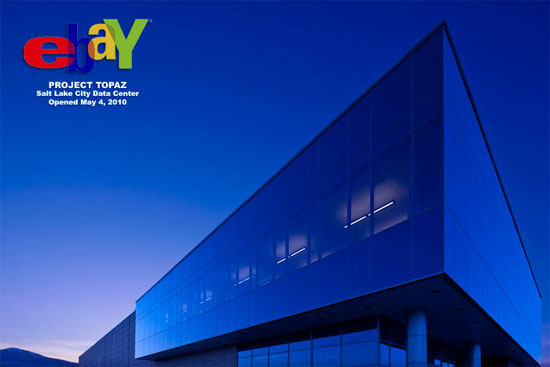Building, let alone operating, a Tier IV data center to support a business that transacts $2,000 per second — that’s over $172 million per day, $60 billion per year folks — sounds like the makings of a huge energy guzzler. But that’s not the case for Dean Nelson, eBay’s senior director of Global Data Center Strategy and Operations.
In an interview with Smart Planet, Nelson boasts about Project Topaz’s 1.4 PUE rating, which is quite a feat considering how much redundancy is built into the company’s new $300 million facility in South Jordan, Utah. Part of a data center consolidation plan, the site saves a considerable amount of energy (and money) by using water-side economizers for cooling, which cuts the use of air conditioners to roughly half the year.
He reveals another interesting tidbit about energy monitoring and how it may affect a company’s relationship with IT vendors:
Every server is now measured, so I can see with less than 1 percent error rate the actual consumption of every server. So we can see the efficiency and take that to our vendors. We plan to roll these into our [requests for proposals] in the future.
Clearly, vendors are starting to feel the pressure from big IT customers, which will only grow more intense as they target energy savings in a bid to improve the bottom line. Catch the rest of Dean Nelson’s insights here.
Image credit: eBay


It’s a real pity that companies have not used cloud computing to combat CO2 emissions. That would be perfectly feasible with choosing the right location for your servers (here’s why that matters: http://www.fincloud.freehostingcloud.com/ ). It even makes economic sense to think twice of where your computing power is located.